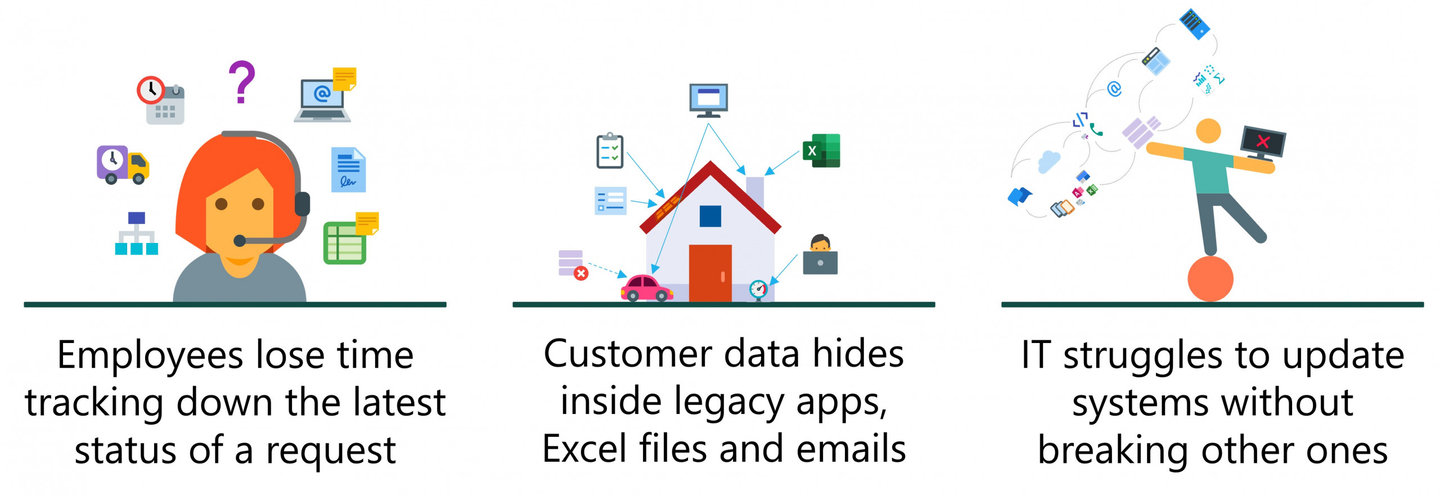Your Genesys Blog Subscription has been confirmed!
Please add genesys@email.genesys.com to your safe sender list to ensure you receive the weekly blog notifications.
Subscribe to our free newsletter and get blog updates in your inbox
Don't Show This Again.

Organizations across all industries compete on customer experience (CX), not price. And customers expect fast, personalized service, regardless of the channel they use. To do this, contact center agents need a holistic view of the customer.
But here’s the problem: Customer data often resides in multiple siloed sources, such as CRM systems, legacy applications, billing databases and spreadsheets. Customers are frustrated when they have to wait for agents to chase down information and other resources. Where agents need to look is often a matter of internal knowledge that has developed over time by a limited number of seasoned employees.

As more businesses digitally transform their customer service and CX processes, they’re often met with a variety of common hurdles. While external forces — supply chain issues, the “Great Resignation,” and the state of the global economy, to name a few — contribute to this, it’s often internal pressures that sabotage transformation initiatives. Demonstrating quick wins inside your organization is the surest way to demonstrate value.
It’s easy to say that the COVID-19 pandemic fundamentally changed how organizations around the world do business. But it’s difficult to implement the steps needed for success in a delicate global ecosystem.
Companies saw an exodus of talent unlike most had experienced before, which further strained the effectiveness of staff. In addition to a looming recession and supply chain issues, business leaders are faced with surmounting odds to solve their customers’ service requests in a timely and orderly fashion.
Much of this pressure falls on the customer service agent.
Global economies are starting to slow down but contact center call volume isn’t. And it’s now more challenging for companies to hire quality talent to handle the increasing volume of incoming calls or tickets.
With a lack of highly skilled employees and supply shortages keeping shelves empty, service staff is often overloaded with customer inquiries. And many don’t have the necessary tools to provide high-quality customer support.
According to 2022 McKinsey & Company survey, 61% of customer care leaders reported an increase in total calls. And 58% of respondents expect call volumes to increase over the next six months. As a result, the best organizations will have to differentiate themselves based on their CX practices — not multiple products — and strive to make that part of the business a profit center.
Giving customer service agents a unified view into the customer – from a single desktop solution – improves not only the customer experience but also employee engagement and satisfaction. A service-centric desktop includes the following attributes:
A 360-degree customer view: With a single click, agents need to quickly access information and tools for resolving customer requests. View account details, see steps taken and assess what needs to be done next.
Built-in screen-pop: The agent desktop should be the center of your agent’s world. Improve productivity by screen-popping a context-aware customer view of important cases, interactions, appointments, and internal or external data.
Case management (or advanced ticketing): End-to-end case management automates and streamlines diverse service requests across your teams. This is the key to connecting people, systems and processes to ensure every request is resolved — even if it goes beyond the contact center into claims processing, order fulfillment, billing disputes, etc.
Automation: Automate manual tasks, automatically resolve simple customer requests, and assist employees to better handle more complex requests.
Service-centric analytics tailored for the contact center: Real-time dashboards for contact center supervisors offer the ability to gain insights into where customer requests stand, identify bottlenecks, have visibility into your team’s performance and more.
Customers: Increase satisfaction
Reduce customer effort and increase FCR by exceeding customer expectations for a single, consistent conversation – whether it’s through social, mobile, chat, phone calls, or in-person.
Employees: Improve productivity
Simplify and augment the agent experience by consolidating all their applications in a unified desktop so they can work faster. Provide a step-by-step guidance to solve customer issues efficiently. Automate common, repetitive tasks to connect front and back-office operations so that agents can focus on higher-value, high-touch interactions.
IT department: Accelerate time to value
Make it easier and faster for your IT teams to understand changing business requirements, such as new products, channels, devices, policies, and procedures, into working customer service applications.
Taking small steps and making incremental changes is often the best approach for organizations going through a CX transformation. Prioritizing projects that most affect customer satisfaction — or pieces of your CX processes customers frequently interact with — are keys to providing a streamlined customer experience.
And there are several third-party applications that can enhance your Genesys Cloud™ platform implementation to improve both customer and employee experiences. The first step is to visit the Genesys AppFoundry® Marketplace to find the solution that’s right for you. Then start with a proof-of-concept or pilot to demonstrate value (ideally go-live in less than 60 days). Finally, enhance your solution and identify more opportunities to streamline your CX.
Eccentex ServiceJourney is a low-code platform for customer service and case management that impacts the entire organization. With a 360-degree view of every customer’s data and interactions, you can provide agents with all the necessary tools to resolve problems quickly and empathetically. To learn more, visit Eccentex online or check out the AppFoundry page.
Subscribe to our free newsletter and get blog updates in your inbox.